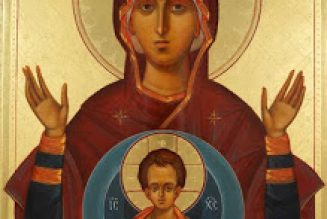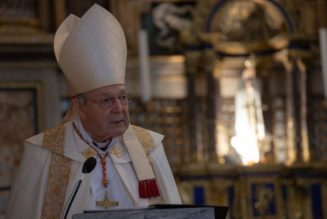Victor Hugo begins The Hunchback of Notre Dame, amazingly, by discussing a fire! Not any fire, but one that destroyed a beautiful and historical Gothic building.
The story opens in the Grand Hall of Paris’ Royal Palace on the 6th on January 1482, with a crowd awaiting a miracle play, performed to honor ambassador’s from Flanders (a play that likewise meets a tragic end).

The book truly reads like a history of Parisian architecture, with a narrative woven through Hugo’s descriptions of palaces, houses, churches, abbeys, streets, prisons, cells of recluses, bridges, and, of course, the mistress of all the city’s buildings, Notre Dame. In the first chapter, he draws the reader into the great hall, where justice was administered, in the king’s palace:
With the reader’s consent, we will endeavor to retrace in thought, the impression which he would have experienced in company with us on crossing the threshold of that grand hall, in the midst of that tumultuous crowd in surcoats, short, sleeveless jackets, and doublets.
And, first of all, there is a buzzing in the ears, a dazzlement in the eyes. Above our heads is a double ogive vault, panelled with wood carving, painted azure, and sown with golden fleurs-de-lis; beneath our feet a pavement of black and white marble, alternating. A few paces distant, an enormous pillar, then another, then another; seven pillars in all, down the length of the hall, sustaining the spring of the arches of the double vault, in the centre of its width. Around four of the pillars, stalls of merchants, all sparkling with glass and tinsel; around the last three, benches of oak, worn and polished by the trunk hose of the litigants, and the robes of the attorneys. Around the hall, along the lofty wall, between the doors, between the windows, between the pillars, the interminable row of all the kings of France, from Pharamond down: the lazy kings, with pendent arms and downcast eyes; the valiant and combative kings, with heads and arms raised boldly heavenward. Then in the long, pointed windows, glass of a thousand hues; at the wide entrances to the hall, rich doors, finely sculptured; and all, the vaults, pillars, walls, jambs, panelling, doors, statues, covered from top to bottom with a splendid blue and gold illumination, which, a trifle tarnished at the epoch when we behold it, had almost entirely disappeared beneath dust and spiders in the year of grace, 1549, when du Breul still admired it from tradition.
Hugo, however, laments the demise of the hall, and with it much of France’s history, thought to have been deliberately burned in the year 1618. More fires would complete the destruction of major sections of the royal compound in 1737 and 1776, and then again in 1871.

Hugo explores a “triple explanation” for the 1618 fire: “political, physical, and poetical.” Political in that accomplices of the assassin of Henry IV sought to destroy evidence; physical through a meteor that allegedly fell upon the building; and poetical, justice turning against the Palace of Justice, as Théophile captured in a poem:
“Sure, ’twas but a sorry game
When at Paris, Dame Justice,
Through having eaten too much spice,
Set the palace all aflame.”
The cause of the 2019 Notre Dame fires remains unknown, but we can look at the same three layers at work.

- Political: The French government, which has owned the church due to recurring waves of secularism unleashed by the Revolution, has neglected the building and refused costly maintenance.
- Physical: Notre Dame’s attic beams, “The Forest,” preserved the original timber, from trees of a height no longer growing in France, and, with its ancient dryness, burned with an extreme ferocity.
- Poetical: Catholic commentators quickly saw the fire as an image of a suffering Church and a world without God. The Christian past, the whole civilization that Notre Dame embodied, has gone up in flames.
Although many thought the fire would immediately destroy the church, and some think it still might, the work of restoration has begun. Hugo would see the destruction and fight over the restoration as in line with the building’s entire history. Churches are living and breathing organisms, created not only through the genius of architects, but kept alive by the prayers and sacrifice within. It is undeniable that Notre Dame has grown and developed alongside of Paris, developing and suffering along with the city.
The cathedral’s condition when Hugo published the book in 1813 distressed him enough to write:
The church of Notre-Dame de Paris is still no doubt, a majestic and sublime edifice. But, beautiful as it has been preserved in growing old, it is difficult not to sigh, not to wax indignant, before the numberless degradations and mutilations which time and men have both caused the venerable monument to suffer, without respect for Charlemagne, who laid its first stone, or for Philip Augustus, who laid the last.
On the face of this aged queen of our cathedrals, by the side of a wrinkle, one always finds a scar. Tempus edax, homo edacior; which I should be glad to translate thus: time is blind, man is stupid.
If we had leisure to examine with the reader, one by one, the diverse traces of destruction imprinted upon the old church, time’s share would be the least, the share of men the most, especially the men of art, since there have been individuals who assumed the title of architects during the last two centuries. . . .
’Tis thus that the marvellous art of the Middle Ages has been treated in nearly every country, especially in France. One can distinguish on its ruins three sorts of lesions, all three of which cut into it at different depths; first, time, which has insensibly notched its surface here and there, and gnawed it everywhere; next, political and religious revolution, which, blind and wrathful by nature, have flung themselves tumultuously upon it, torn its rich garment of carving and sculpture, burst its rose windows, broken its necklace of arabesques and tiny figures, torn out its statues, sometimes because of their mitres, sometimes because of their crowns; lastly, fashions, even more grotesque and foolish, which, since the anarchical and splendid deviations of the Renaissance, have followed each other in the necessary decadence of architecture. Fashions have wrought more harm than revolutions. They have cut to the quick; they have attacked the very bone and framework of art; they have cut, slashed, disorganized, killed the edifice, in form as in the symbol, in its consistency as well as in its beauty. And then they have made it over; a presumption of which neither time nor revolutions at least have been guilty. They have audaciously adjusted, in the name of “good taste,” upon the wounds of gothic architecture, their miserable gewgaws of a day. . . .
The Hunchback of Notre Dame, Book 3, chapter 1
Hugo speaks stern words not only for revolutionaries who scarred the sacred edifice with fire and hammer, but, maybe even most especially, for architects who sought to “improve” it according to current fashion. The most egregious example he cites comes from the high altar (see pictures below):
And who substituted for the ancient gothic altar, splendidly encumbered with shrines and reliquaries, that heavy marble sarcophagus, with angels’ heads and clouds, which seems a specimen pillaged from the Val-de-Grâce or the Invalides? Who stupidly sealed that heavy anachronism of stone in the Carlovingian pavement of Hercandus? Was it not Louis XIV, fulfilling the request of Louis XIII?
Hugo points to three main culprits of destruction: time, revolution (religious and political), and restoration. He fears the third the most, a warning to would be restorationists of our own day–the authors of proposals that should make us shudder.
The Hunchback of Notre Dame, following Napoleon’s self-coronation there a decade earlier, led to renewed interest in preserving the church, an effort that would be spearheaded by the marvelous and controversial Eugène Emmanuel Viollet-le-Duc in the following decades. Without this restoration, Hugo realized that precariousness of the church’s future, writing words that echo prophetically: “The church will, perhaps, itself soon disappear from the face of the earth.” May Our Lady’s intercession preserve her great church and may its rebirth lead to a rebuilding of Christian culture throughout the world.









